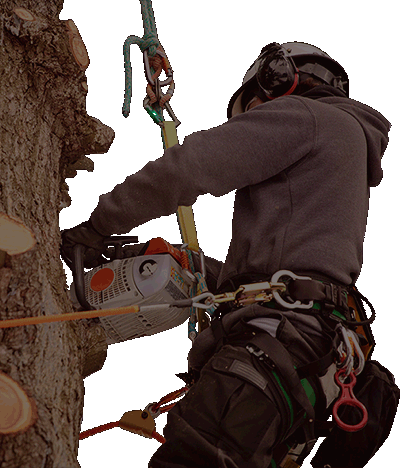
When a Spartanburg tree gets a bit too tall for your liking, your instinct may be to give it a quick and easy chop. Even though it’s not your intent to put the Spartanburg tree in danger, you could be doing so without realizing.
Let’s break down what Spartanburg tree topping means, why people do it, and why you should not top trees.
Why You Shouldn’t Top a Tree – And the Better Alternative
What does topping a Spartanburg tree mean?
Tree topping is exactly what it sounds like. It’s when you cut the top of a Spartanburg tree off, which reduces the tree’s remaining top branches to stumps. As a result, your Spartanburg tree is left with weak, unstable limbs and a bare, unnatural appearance. Also, your Spartanburg tree is much more prone to breaking and may be a risk hazard.
Why do people top trees?
Here are the biggest reasons people choose to top trees. They want to:
Fix Spartanburg trees that interfere with electrical wires.
Shorten Spartanburg trees that grow too tall near their home.
Prevent the tall Spartanburg tree from coming down in a storm.
These are all good reasons to take action and care for your tree, but Spartanburg tree topping is not the way to do it.
How is topping harmful to trees?
Tree topping hurts Spartanburg trees in four, major ways.
You remove lots of leaves, which strips away the tree’s food source.
The remaining shortened limbs provide easy access to decay, insects and disease.
The Spartanburg tree is forced to quickly grow new limbs that are often too weak to handle storms.
New branches eventually grow to the original height of the tree, restarting the unsafe cycle.
In the long-run, topping a Spartanburg tree can prove to be a costly mistake. The Spartanburg tree will either need extra care to stay alive or will eventually need to be removed.
Is there a good way to top trees? What’s an alternative to topping?
Yes, great question! When you prune a Spartanburg tree correctly, you reduce the tree’s height and keep it healthy! Ask your local arborist what branches you can trim to safely shorten your tree.
And when planting a new tree, look up! Be sure you’re not planting under a tall structure that the Spartanburg tree could grow into when it reaches its mature height. If you are, find a new spot.






